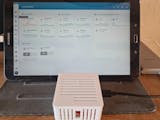Imagine this: you've just installed your smart plug, your lights turn on with a simple voice command, and you feel like you're in charge of your smart home. But then suddenly you read that Home Assistant, the brains behind your automation, is announcing big changes. Don't panic! We're going to help you understand what's going on. Home Assistant is ending support for 32-bit systems and two older installation methods (Core and Supervised). What does this mean for you, whether you're already a fanatic user or just getting started with smart lighting or a smart doorbell? Let's break it down step by step, with a touch of humor—because my smart lightbulb blinked in fear when it heard this news!
What's going on with Home Assistant?
Home Assistant recently announced that it will discontinue support for several older systems and installation methods starting with version 2025.12 (end of this year). Specifically, this includes two installation methods and three CPU architectures that will no longer be supported. Below is an overview:
-
Disappearing installation methods:
-
Home Assistant Core : This is a method where you run Home Assistant in a Python environment. Sounds technical, and it is!
-
Home Assistant Supervised : With this you install an operating system yourself and place Home Assistant on top of it with a Supervisor.
-
-
CPU architectures that are no longer supported:
-
i386 (32-bit x86): Used in old Intel and AMD processors from before 2003.
-
armhf (32-bit ARM hard-float): Found in the very first Raspberry Pis.
-
armv7 (32-bit ARM): Found in slightly newer models such as the Raspberry Pi 2.
-
Starting with version 2025.6 (June 2025), users of these systems will receive a warning in their dashboard. You will then have six months to take action before support ends completely.
Why does Home Assistant do this?
You might be wondering: why all these changes? Well, Home Assistant wants to focus on the future. The Core and Supervised methods are complex to install and maintain, both for users and the support team. Only 2.5% use Core and 3.3% Supervised, while most people already opt for simpler options like Home Assistant OS or Container (for example, via Docker). Moreover, 32-bit systems are now so old that less than 1% of users still have them. The industry has moved to 64-bit, and Home Assistant is following that trend to continue developing new features.

In short, they want to make life easier for new users and reduce the burden on their support team. Because let's face it, if you're using an old Raspberry Pi 2, it might be time for an upgrade—just like an old CRT TV is outdated and needs to be replaced by a modern flatscreen!
What does this mean for you as an existing user?
Already running Home Assistant and wondering if you'll run into problems? Don't worry, we'll walk you through it:
-
Check your installation method and hardware : In Home Assistant, go to Settings > System > Repairs > System Information . Here you'll see your installation type and CPU architecture. If you're using Home Assistant OS or Container and have a 64-bit system (such as aarch64 or x86_64), you're good to go. Do you see Core, Supervised, or a 32-bit architecture like i386, armhf, or armv7? Then you need to take action.
-
What if you're affected? Your updates and support will continue working until December 2025 (release 2025.12). After that, official support will end. Your system won't be broken immediately, but you'll no longer receive new features, bug fixes, or security updates. This poses a risk, especially for the security of your smart home.
-
Migrating is easier than you think : Home Assistant has significantly improved the backup and restore function. Create a backup of your current setup, download it, and restore it on a new system. Even if you change installation methods or hardware, this often works seamlessly. Do you have a Raspberry Pi 3 or 4 with a 32-bit OS? You can often upgrade to a 64-bit OS without new hardware.
-
Upgrade with Home Assistant Green : If your hardware is outdated or you simply want a future-proof solution, the Home Assistant Green The perfect choice. This device is specifically designed for Home Assistant, runs on a powerful 64-bit architecture, and comes pre-installed with Home Assistant OS. Plug and play, ideal for a smooth transition!
Tip : If you have important automations running through Home Assistant, make sure to migrate before the end of the year. At slimhuisje.nl, we have everything you need to upgrade your setup – from the Home Assistant Green to user-friendly products.

And if you just want to get started with Home Assistant?
Are you new to the world of Home Assistant and want to start automating your home, implementing smart solutions, or improving your security with smart devices? Then this news is actually a bonus for you. Home Assistant now guides new users directly to the most user-friendly and future-proof options: Home Assistant OS and Container. This means less hassle and a smoother start.
-
Choose the right hardware : Go for a 64-bit system, and the easiest and most user-friendly option is the Home Assistant Green . This device is plug-and-play, powerful, and perfect for beginners. No complicated installation hassles; you'll be ready to automate your home in no time.
-
Installation method : With Home Assistant Green, you already have Home Assistant OS pre-installed, including add-ons. Want more control? Containerization via Docker is also an option, but Green makes life much easier.
-
How do I set up Home Assistant? : With the Home Assistant Green it's simple: unpack it, plug it in, and you're ready to go. Connect your smart plug , smart lighting , or smart doorbell , and your home will be smarter than ever!
At slimhuisje.nl, you'll find everything you need to get started, from the Home Assistant Green to smart devices that work perfectly with Home Assistant. We're happy to help you get started!
How do you migrate to a new system?
For existing users who need to switch: don't worry, migrating is easy. Here's a quick step-by-step guide:
-
Make a backup : In Home Assistant, go to Settings > System > Backups and make a full backup.
-
Choose your new setup : Using Supervised? Switch to Home Assistant OS. Core user? Container is your best friend. Do you have outdated hardware that is no longer supported? Then the Home Assistant Green a fantastic choice – durable, affordable, and future-proof with a 64-bit architecture.
-
Restore your backup : Install your new system and restore your backup during setup. If you use Home Assistant Cloud, you can easily log in and restore your data.
The green ones remain, and the red ones are obsolete (deprecated):

It's a small effort for a future-proof setup. And hey, while you're at it, why not expand your smart home with other smart home products? Check out our extensive range at slimhuisje.nl and make your home even smarter!
Conclusion: Time for an upgrade!
Whether you've been using Home Assistant for years or are just starting out, these changes are an opportunity to take your smart home to the next level. For existing users: check your system and migrate in time to continue to benefit from updates and support. For newcomers: start right away with the right hardware, such as the Home Assistant Green , and make your home smart with a smart plug , smart lighting , or a smart doorbell .
At slimhuisje.nl, we're ready to help you with the best products and advice. Browse our collection and start your smart home adventure. www.slimhuisje.nl !
What do you think? Do you have an old Raspberry Pi lying around that needs an upgrade, or are you curious how to set up Home Assistant with Home Assistant Green? Let us know in the comments; we're happy to help!



